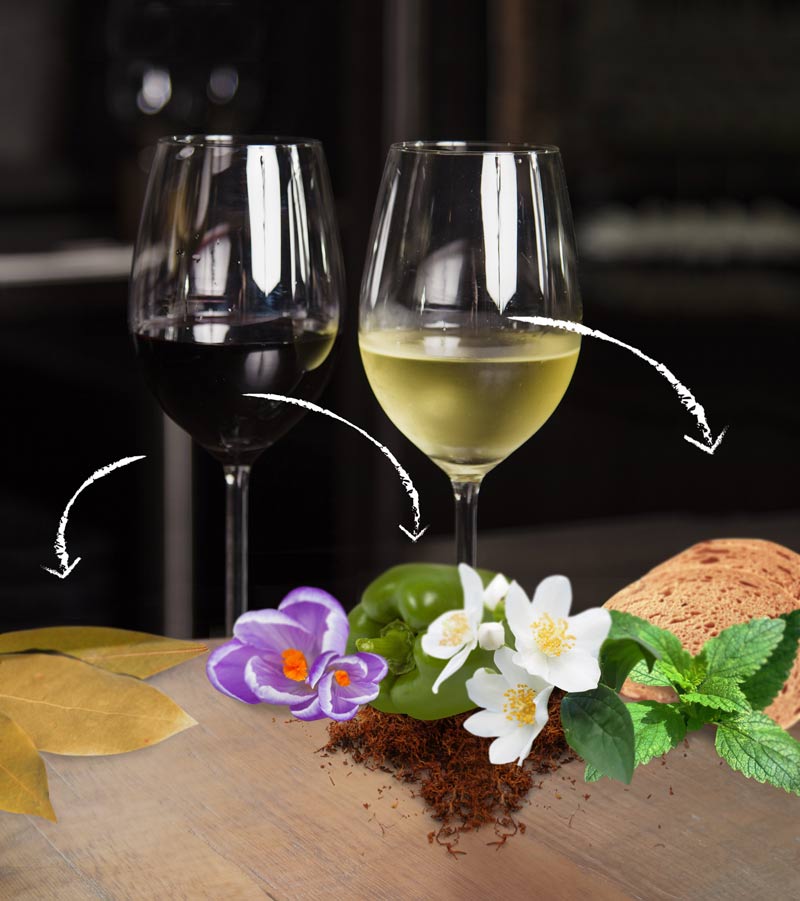
We have already talked about the factors that influence wine aromas. Nonetheless, we are going to explore its base and evolution.
Actually, the olfactive analysis is very important on a wine. When smelling it, if it is not clean or if it is has a smell of mould you won’t drink it for sure.
which types of aromas does it have?
In first place, there are aromas from the grape, which give the wine a special style. These are the primary aromas – come from the interior of the grape cells.
For example, on white wines we can find floral aromas (jasmine, orange flour), aromas of vegetables (green tea, mint), fruity (apples, peaches), and mineral aromas.
On red wines, we find floral aromas (roses, dry flours), aromas of vegetables (green pepper, humus), and aromas of red fruits and spices.
There are also secondary aromas, which show up with the alcoholic fermentation. Here the oenologist decisions (fermentation conditions, temperature, etc) have a big influence on the wine’s final profile.
Either white and red wines may present secondary aromas, like bread crumbs, milk or butter for example.
Finally, there are tertiary aromas which are the result of the aging process and method. These aromas are due to the contact of the wine with wood and the glass, or only the glass. The process originates more complex aromas, like vanilla, caramel, tobacco, dried fruits, for example.
Free tip: A clean intense aromas is always a good parameter of quality for a wine.
Cheers!


